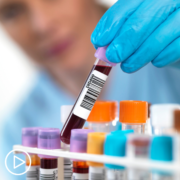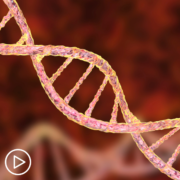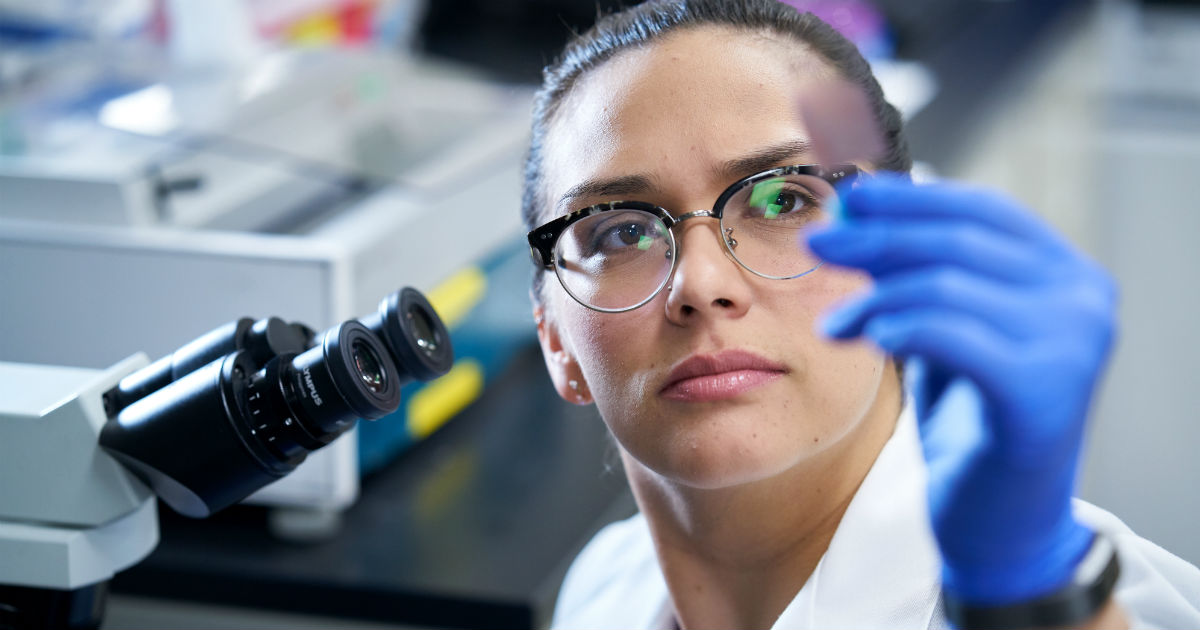Genetic Testing: How do Results Impact Metastatic Breast Cancer Care?
In this podcast, breast cancer expert Dr. Erin Roesch explains how genetic testing results could impact metastatic breast cancer care–including treatment options–and provides advice for self-advocacy.
Dr. Erin Roesch is a breast medical oncologist at Cleveland Clinic. More about this expert here.
Transcript:
Katherine:
Welcome to Empowered, a podcast by the Patient Empowerment Network. I’m your host, Katherine Banwell.
Today, we’re talking about the role of genetic testing in metastatic breast cancer care—how results can impact treatment options and decisions. We’ll also discuss new and emerging treatment options.
Joining us Dr. Eric Roesch. Dr. Roesch, could you please introduce yourself?
Dr. Roesch:
Sure. So, my name is Dr. Eric Roesch. I am one of the breast medical oncologists at Cleveland Clinic.
Katherine:
Thank you. And let’s just start with the basics. So, what is metastatic breast cancer?
Dr. Roesch:
Metastatic breast cancer refers to a cancer that began in the breast and then has spread to involve other parts of the body. Although metastatic breast cancer is likely uncurable, meaningful advances have been made in treatment over the last several years. The primary goals of treatment are to improve survival, as well as quality of life and symptoms.
Katherine:
Dr. Roesch, when patients are first diagnosed with Metastatic breast cancer, are there misunderstanding that they have and what are some of them?
Dr. Roesch:
I think a common misconception that I hear when patients are first diagnosed with metastatic breast cancer, is the availability of treatment options. At the initial clinic visit, I really strive to make sure patients understand that although metastatic breast cancer is unlikely curable, it is very treatable. And we have a lot of therapies, especially that have been approved in recent years, that can help patients live better and longer lives.
Katherine:
That’s really encouraging.
As I mentioned, we’re going to talk about genetic testing, also known as molecular testing.
So, what is genetic testing exactly?
Dr. Roesch:
Genetic testing refers to any type of testing that can help determine an individual’s genotype. Which is essentially, the DNA makeup, or DNA blueprint, that is associated with clinical manifestations of a certain disease or a specific trait. A phenotype, rather. Genetic testing can be determined for a germline, which refers to cells arising from the germ cells, which are applicable the vast majority of the body.
Or they can be selected for somatic cells, such as those found within tumors. Genetic testing can be helpful for metastatic breast cancer, as there are various drug therapies that are approved for patients found to have specific mutations. For example, if a woman is found to have a BRCA1 or 2 mutation, she may be a candidate for a medication called a PARP-Inhibitor.
Olaparib and talazoparib are both PARP-Inhibitors that are approved for patients with germline BRCA mutations and HER2 negative metastatic breast cancer.
Dr. Roesch:
Genetic testing is administered in a couple of different ways. So, first it can be performed on blood or saliva containing cheek cells, essentially.
Testing on tumor tissue can also be used to identify additional acquired or somatic genetic changes.
Katherine:
You mentioned HER2, what is that?
Dr. Roesch:
HER2 is a protein that’s expressed on many other cells throughout the body.
Some breast cancers are driven by, or over express this protein. And that can be helpful to identify patients that might benefit from HER2 targeted therapy.
Katherine:
And what about BRCA1 and BRCA2, what are they?
Dr. Roesch:
BRCA1 and BRCA2 are proteins that are involved in DNA repair in the body. And any time one of these mutations is defective, there is an error in DNA repair.
Katherine:
So, as I understand it, genetic testing can lead to more targeted or personalized treatment. How has targeted therapy changed the landscape in treatment?
Dr. Roesch:
Targeted therapy has definitely had an impact on metastatic breast cancer treatment. There are various therapies that are now approved for patients with a certain breast cancer subtype. As well as for those with specific mutations or protein over-expression. Some examples of these include, CDK4/6 inhibitors, BRCA mutations, PIK3CA mutations and PDL1 expression. For example, for a patient that is diagnosed with triple negative metastatic breast cancer.
It is now routine practice to evaluate PDL1 status. Which can identify whether a patient is a candidate for, and might benefit from, immunotherapy.
Katherine:
And when thinking about genetic testing for metastatic breast cancer, is the testing standard or is it something patients should ask their doctors about?
Dr. Roesch:
I would encourage patients to have open lines of communication with their doctor. And certainly, ask about genetic testing. I think it’s important at certainly the initial visit, and subsequent visits, to always review family history, as this might change.
Here at Cleveland Clinic, we work very closely with genetic counselors. And they are always also available to help answer any additional patient questions.
Katherine:
Let’s shift a bit to self-advocacy. When someone has been diagnosed with metastatic breast cancer, what do you feel are key steps they should take?
Dr. Roesch:
I think there are several important things for a patient who is newly diagnosed with metastatic breast cancer to consider. First, I think it’s important to try and have open lines of communication with your oncologist and care team. It’s really important that we as providers are aware of our patient’s goals, wishes and any concerns they might have. Secondly, I would encourage patients to try and be educated and informed about your diagnosis and treatment. I think it is helpful when patients know what to expect, in terms of how they might feel after starting a certain treatment.
Including side effects to be aware of. I think it’s also helpful to understand that the treatment for metastatic breast cancer is a journey. And there likely might be changes or challenges that happen along the way. And that is where we as the oncologist and care providers come in to help explain things as they happen.
Lastly, but just as importantly, I think it’s really essential to continue to enjoy life and do the things that you like to do. Of course, always doing so in a safe fashion and always check with your physicians about any restrictions related to the type of treatment you might be on.
Katherine:
Why is it so important for patients to partner with their physician on their care decisions?
Dr. Roesch:
I would say it is very beneficial when patients are engaged in their own care and treatment plan. I often have patient that will come to our clinic visit and have a detailed list of questions for me, and I love this. I think it is empowering for patients to understand and be involved in the development of their treatment plan. This type of interaction also really helps to foster a relationship between patients and their oncology providers.
Katherine:
And what about patients who don’t feel comfortable being their own advocate? Do you have any advice for them?
Dr. Roesch:
For patients who maybe have difficulty speaking up or self-advocating, I think a strong support system can be very helpful in this case. This can also be helpful for patients who are comfortable advocating for themselves. It can be helpful to identify others who are close to you, who can help relay any concerns or issues that may arise.
There are also support groups and an entire network of resources within the cancer center that are available to our patients.
Katherine:
Thank you for joining us today, Dr. Roesch, and sharing this valuable information.
Dr. Roesch:
Happy to be here, thank you.
Katherine:
And, thank you to our listeners for joining us. This has been Empowered, a podcast by the Patient Empowerment Network.
I’m Katherine Banwell.
Don’t miss an episode and subscribe to PEN’s Empowered! Podcast wherever podcasts are available.
















